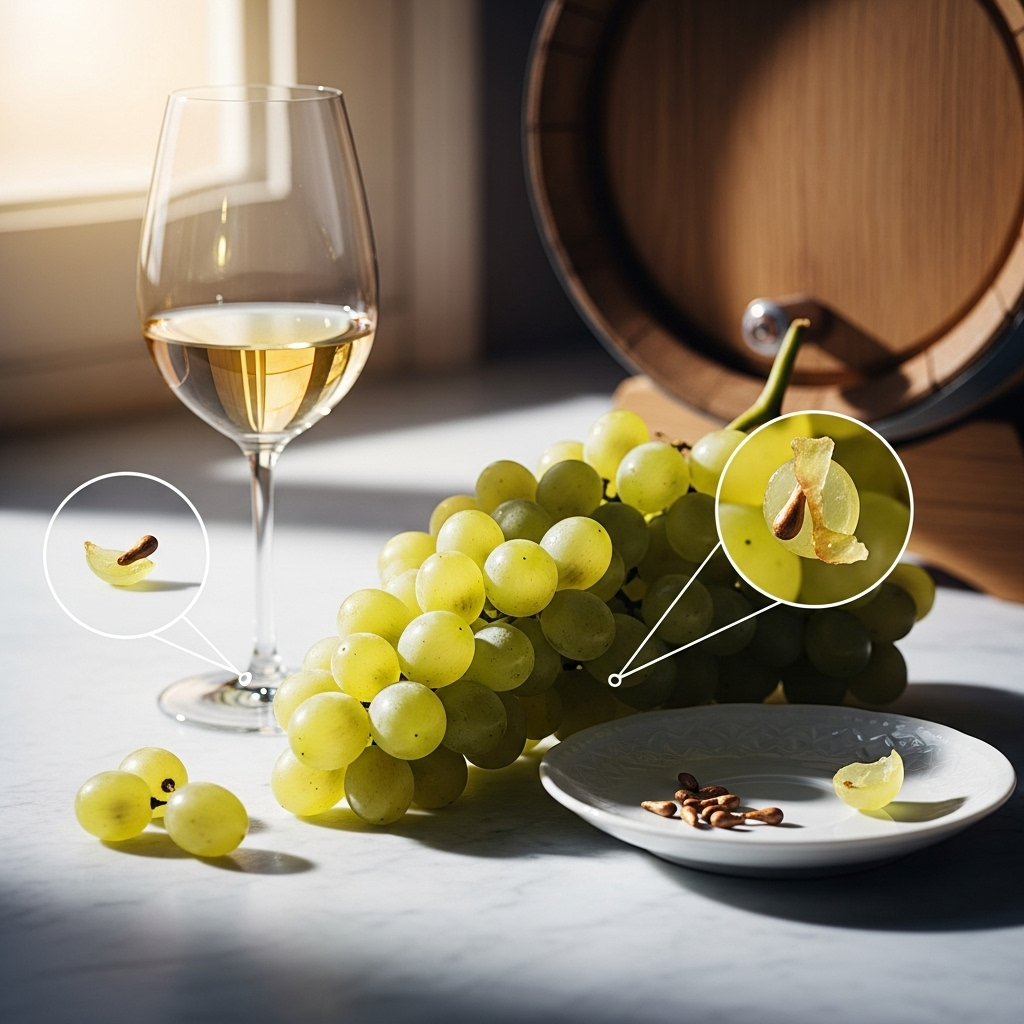
White Grape Tannins and Texture Insights
Share
Understanding Tannins: The Unsung Hero of White Wines
Tannins, often overshadowed by their more celebrated counterparts in red wines, play a crucial role in the texture and overall experience of white wines. These naturally occurring polyphenols, derived from grape skins, seeds, and stems, contribute not only to a wine's structure but also to its aging potential. In white wines, where tannins are typically less pronounced, their subtle presence can enhance mouthfeel and provide a delightful contrast to the wine's acidity. The extraction of tannins in white winemaking is often a delicate process, as winemakers seek to balance them with the wine's fruitiness and freshness. Varietals like Chardonnay and Sauvignon Blanc, particularly those that undergo skin contact, showcase how tannins can impart a creamy texture and complexity, elevating the tasting experience. Understanding the role of tannins in white wines allows enthusiasts to appreciate the depth and nuance that these unsung heroes bring to the glass, revealing a world beyond the traditional confines of red wine enjoyment.
The Texture Profile: How Tannins Influence the White Wine Experience
Tannins, often associated with red wines, play a surprisingly nuanced role in white wines, contributing significantly to the overall texture and mouthfeel. Unlike their red counterparts, white grape tannins are typically less pronounced, yet they still impart a delicate structure that enhances the wine's complexity. These tannins, derived from the skins, seeds, and stems of grapes, can create a subtle astringency that balances the acidity, leading to a more rounded palate.
When present, tannins can also evoke a sensation akin to silk or velvet, enriching the experience as the wine glides across the tongue. This tactile quality is particularly evident in varietals like Chardonnay or Viognier, where the interplay of oak aging and tannins can result in a creamy, lush mouthfeel. Moreover, as white wines age, the tannins can soften, allowing the fruit flavors to emerge more prominently, thus transforming the wine's profile over time. Ultimately, the presence of tannins in white wines is a testament to the intricate artistry of winemaking, enhancing not just the flavor but the entire sensory journey.
Innovations and Trends: Enhancing Texture in Modern White Winemaking
In recent years, the world of white winemaking has witnessed a remarkable shift towards enhancing texture, with innovations playing a pivotal role. Winemakers are increasingly experimenting with techniques traditionally associated with red wines, such as extended skin contact and the use of oak barrels for fermentation and aging. This approach allows for the extraction of white grape tannins, which contribute to a more complex mouthfeel and greater structure.
Additionally, the rise of amphora and concrete egg fermentation has introduced a new dimension to texture, promoting micro-oxygenation while preserving the wine’s inherent freshness. These vessels allow for a more nuanced interaction between the wine and its environment, fostering a unique textural profile that resonates with consumers seeking depth and character.
Moreover, advancements in grape growing, such as selective harvesting and meticulous vineyard management, have enabled winemakers to capture the full potential of white grape tannins. This holistic embrace of innovation not only elevates the sensory experience but also aligns with a growing consumer demand for wines that tell a story through their texture and complexity.
